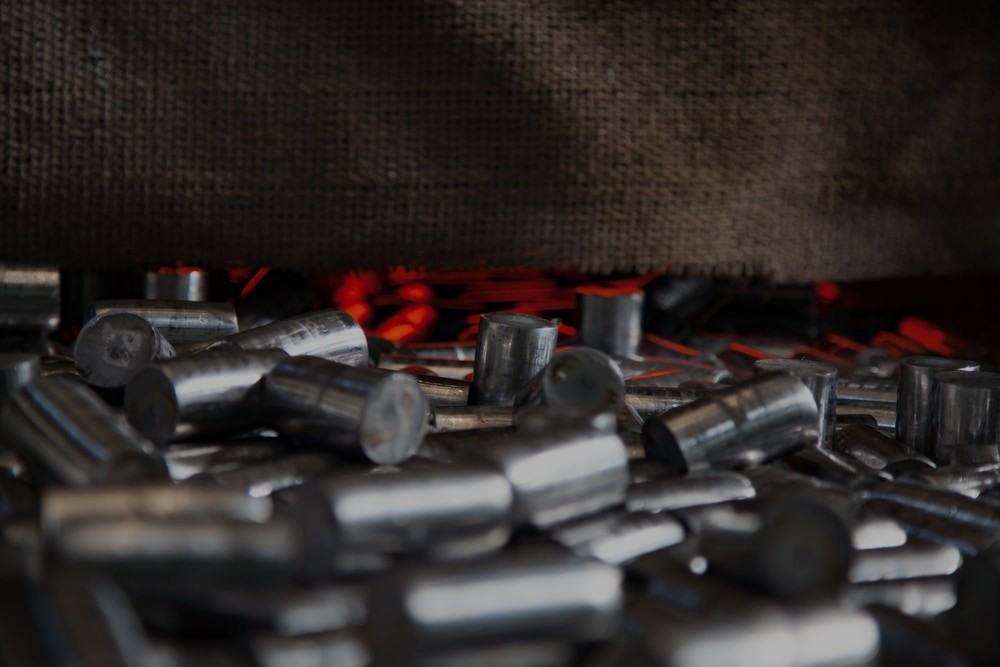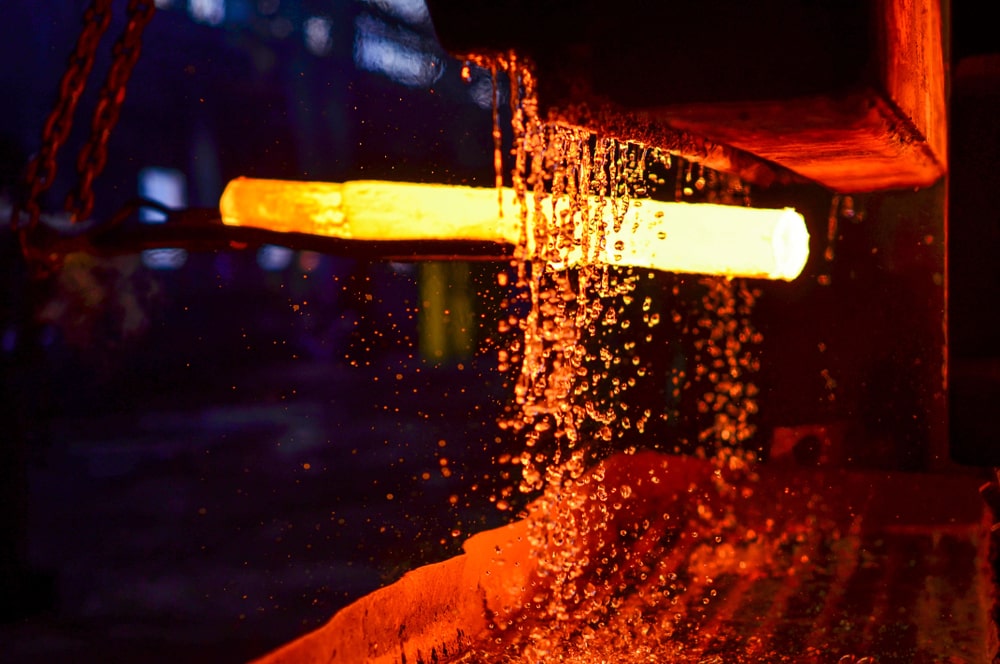

Originally published on fastradius.com on December 1, 2021
CNC machining is a subtractive manufacturing process that uses cutting tools to remove material from a solid block, revealing the shape of the final part. To make the machining process easier and create a superior final part, the metals used must be workable. Also, the material properties of the metal part can be enhanced after the machining process has been completed. That’s where heat treatments come in. Here’s everything you need to know about how to heat treat metal and the most important benefits of heat treatments.
Heat treatment processes involve heating up the metal until its microstructure changes and then keeping the metal in that state (soaking) before cooling it to harden the material. How long you soak a metal depends on which heat treatment process you’re using, which metal you’re using, and your part’s size. The longer the soak time, the greater the microstructure changes, which will impact the mechanical properties of the metal.


The rate of cooling and surrounding conditions can also alter the metal’s structure and properties. While brine can cool metals the fastest, you can also use oil, water, forced air, or furnaces.
Heat treatments may be applied throughout the manufacturing process, giving parts their initial, intermediate, or final properties. When CNC machining parts, you might apply a heat treatment before beginning the machining process, as this can reduce lead times and make the metal more workable. In other cases, you might apply heat treatments to the metal after machining to make it harder and more durable.
Annealing
Carried out to reduce the hardness of the metal and increase its ductility, the annealing process involves heating and soaking metal at a critical temperature before cooling it. This helps relieve internal stresses and makes the metal less likely to break or fracture while being machined. You can use several annealing techniques, such as full annealing, recrystallization annealing, partial annealing, and final annealing to achieve your desired final properties.
Normalizing is another annealing technique that involves heating the metal up and then cooling it at room temperature at a much faster pace than typical annealing. Once the metal reaches 40 °C hotter than its upper critical temperature, it will soak before cooling in the air. Normalizing relieves internal stress caused by quenching, casting, or welding to prevent metal failure, which strengthens the metal and produces small, refined, and uniformly sized ferritic grains.
Case hardening
To harden a part’s exterior without altering its interior, you can use the case hardening process. Case hardening, also known as face hardening or surface hardening, creates less brittle, more workable parts than other methods that increase hardness throughout the metal. One form of case hardening involves heating your metal in a carbon-rich environment (carburization), as this increases the metal surface’s strength and carbon content.
Precipitation hardening
Precipitation hardening or aging creates strong and lightweight metals, making it a popular choice for heat treating components for the aerospace industry. If you have a malleable metal, you can heat it to a high temperature, quench it, and heat it to a lower temperature for an extended period to disperse the precipitates evenly throughout the metal’s grain structure and increase its strength and hardness.
Stress relieving
CNC machining, forming, rolling, and straightening can all cause stress to build up within parts, which can weaken them and reduce their overall quality. Stress relieving will remove residual stresses and improve the part’s mechanical properties without altering its structure or hardness. This process involves heating metals to temperatures just below their lower critical border. The cooling process is always slow, making it possible to create uniform parts with consistent mechanical properties.
Quenching and tempering
This two-part heat treatment increases the hardness, ductility, and resilience of iron-based alloys. During quenching, the metal is heated to a high temperature, changing its crystalline structure from ferrite to austenite and allowing it to absorb more carbon. The metal will then be rapidly cooled to lock in the microstructure changes. Since quenching creates very hard parts, it usually comes after CNC machining.
To reduce brittleness, relieve internal stresses, and improve the part’s longevity and mechanical properties, you can then temper the metal by heating it to a moderate temperature that’s below its critical point.
What does heat treating do to metal? Heat treating metal can greatly increase its strength, which makes heat treating a popular choice among manufacturers in the automotive and aerospace industries. Unfortunately, when you increase a material’s strength, you can also end up reducing its toughness and increasing its brittleness. To ensure your metal doesn’t become too brittle, you may need to anneal or temper your parts to relieve internal stresses. Following stress-relieving procedures, your heat-treated metals will be much easier to work with and machine.
Plus, by applying heat treatments to metal alloys, you can modify the metal’s microstructure or chemical composition to alter its corrosion resistance, magnetism, durability, heat conductivity, and electrical conductivity. You can even put a metal part through many heat treatments to achieve your desired performance.
By heat treating your metal, you can create stronger, less brittle, and more machinable metal parts. You can even improve your metal’s electrical properties with heat treatments. However, some heat treatments are better than others depending on the material, so doing your research is essential. When it comes to choosing the right heat treatment for your part, consider the type of metal you’re using and the properties you want it to have. You can also work with a trusted manufacturing partner to determine the best heat treatment method for your needs.
At Fast Radius, our team of experienced engineers and designers can help you decide which heat treatment method is best suited for your project. Plus, we will provide end-to-end support for the entirety of your production run. Contact us today to get started on your next project.
Forget typical cycle times. We're pushing the boundaries of conformal cooling. While traditional approaches deliver…
Forget typical cycle times. We're pushing the boundaries of conformal cooling. While traditional approaches deliver…
From left to right: Brayden Janak (apprentice); Logan Vifaquain (CNC machining, Programming and CMM); Ron…
SyBridge Technologies is proud to announce we have been awarded the 2023 General Motors Supplier…
Today, designers and engineers are accustomed to working with digital tools in their day-to-day jobs.…
Optimizing Your Injection Molding Process for Cost-Effective Manufacturing Excellence In today’s competitive landscape, manufacturers are…